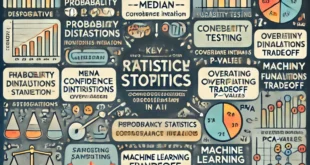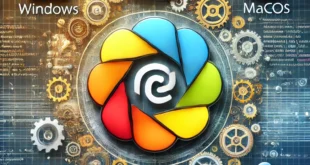When it comes to modern programming languages, Python is right up there with the best of them. Web development, data analysis, machine learning, and automation are just a few of the many areas that take advantage of Python’s famed simplicity and readability. If you are interested in expanding your programming abilities or are just starting out, Python is a great language to learn.
Every Python programmer should be familiar with the basic ideas presented in this guide, which will examine the language’s syntax and essential features.
1. What is Python?
Guido van Rossum initially released Python in 1991. It is an interpreted, high-level, general-purpose programming language. Since Python places an emphasis on writing simple and readable code, it is a great choice for newcomers. Developers can convey ideas with fewer lines of code using its syntax compared to languages like Java or C++.
Important Python Features:
- Python is a great language for beginning programmers because of its simple and straightforward syntax.
- Python is an interpretive language that allows for better debugging due to its line-by-line execution.
- The extensive library that comes with Python allows developers to save time and effort.
- Python is cross-platform, meaning it works on all major operating systems.
2. Installing Python
Installing Python on your PC is a prerequisite to starting to write Python code. Verifying the version of Python in your terminal or command prompt after installation is a good way to ensure proper setup. You can download Python from the official website: python.org/downloads.
Example:
python --version3. Hello, World!
Printing “Hello, World!” on the screen is typically the first thing most developers learn when they start programming. You can see how to produce text in Python using this basic program. You may accomplish this in Python by making use of the print() function.
Code Example:
print("Hello, World!")4. Data Types and Variables
Data can be stored in Python variables. You are not required to declare the type of a variable ahead in Python due to its dynamic typing mechanism. Among Python’s most popular data types are:
- int: Real numbers
- float: Floating-point numbers
- str: Text or strings
- bool: Boolean values (True or False)
Code Example:
# Example of different data types
x = 10 # int
y = 10.5 # float
z = "Hello" # str
a = True # bool
print(x, y, z, a)
5. Operators
Python provides a wide range of operators for doing logic and mathematical operations. Here are some common operators:
- Arithmetic Operators: For calculations (e.g., addition, subtraction).
- Comparison Operators: To compare values (e.g., equals, greater than).
- Logical Operators: To combine boolean values (e.g., AND, OR, NOT).
Code Example:
# Arithmetic
a = 5
b = 3
print(a + b, a - b, a * b, a / b)
# Comparison
print(a == b, a > b, a < b)
# Logical
print(a > 2 and b < 4, a > 10 or b < 2, not (a > 10))
6. Conditional Statements for Control Flow
Conditional statements are the building blocks of Python’s control flow system. The if, elif, and else statements form the foundation of conditional reasoning. With these statements, you can conditionally run chunks of code. Python checks expressions to see if a piece of code should be executed or not.
Code Example:
x = 10
if x > 0:
print("Positive")
elif x == 0:
print("Zero")
else:
print("Negative")
7. Loops
Code blocks can be iterated using loops. Python offers two primary loop types:
- For Loops: Iterating over a sequence (such as a string, range, or list).
- While Loops: Repeating code as long as a condition remains true.
Code Example:
# For loop
for i in range(5):
print(i)
# While loop
x = 0
while x < 5:
print(x)
x += 1
8. Functions
You can create reusable blocks of code in Python by using functions. The def keyword, a name, and optional parameters are used to define functions. The return keyword allows functions to return values. Coding with functions allows for greater organization and modularity.
Code Example:
def greet(name):
return f"Hello, {name}!"
print(greet("Alice"))
9. Lists, Tuples, and Dictionaries
There are a number of built-in data structures in Python that can hold multiple values:
- Lists: Ordered groups of modifiable objects.
- Tuples: Like lists, but immutable (they cannot be modified).
- Dictionaries: An unordered collection of key-value pairs, ideal for storing related data.
Code Example:
# List
fruits = ["apple", "banana", "cherry"]
fruits.append("date")
print(fruits)
# Tuple
coordinates = (10, 20)
print(coordinates)
# Dictionary
person = {"name": "Alice", "age": 25}
print(person["name"])
10. Module Imports
Numerous modules and libraries are pre-installed with Python. The import keyword allows you to bring in modules from outside sources. By leveraging existing functions and classes, you can expedite the process of creating your own programs.
Code Example:
import math
print(math.sqrt(16))
11. Dealing with Errors and Exceptions
Python handles runtime errors using exception handling. To prevent unexpected software crashes, you can gracefully handle mistakes using try, except, and finally blocks. If you want to make debugging easier, you can set custom error messages.
Code Example:
try:
x = int("a")
except ValueError as e:
print(f"Error: {e}")
finally:
print("Execution complete.")
12. Object-Oriented Programming (OOP)
Object-Oriented Programming (OOP) is a paradigm that Python is compatible with. It is built around the idea of classes and objects. Objects are instances of classes, while classes are used as blueprints for constructing objects. By combining similar data and actions, OOP makes it easier to model real-world entities.
Code Example:
class Dog:
def __init__(self, name):
self.name = name
def bark(self):
print(f"{self.name} says woof!")
my_dog = Dog("Buddy")
my_dog.bark()
13. Conclusion
To begin working with Python, you should familiarize yourself with these fundamental ideas and capabilities. The syntax and structure of Python are straightforward, but you will need to practice enough to really grasp them. Python is a great tool for developing many different kinds of apps because of its vast community and versatility.
For more detailed information, check out the official Python documentation.
 AI Generated Apps AI Code Learning Technology
AI Generated Apps AI Code Learning Technology



